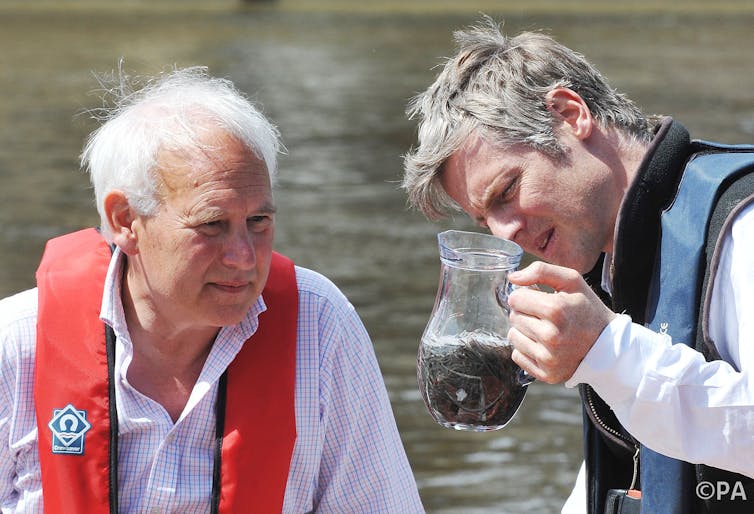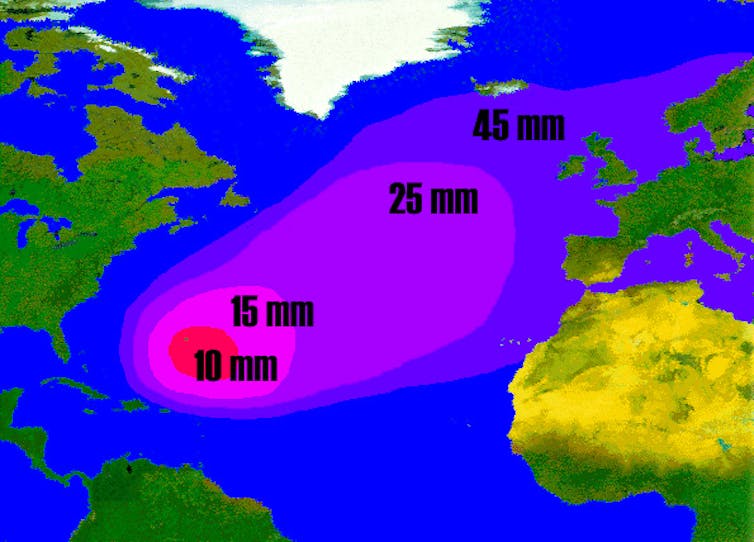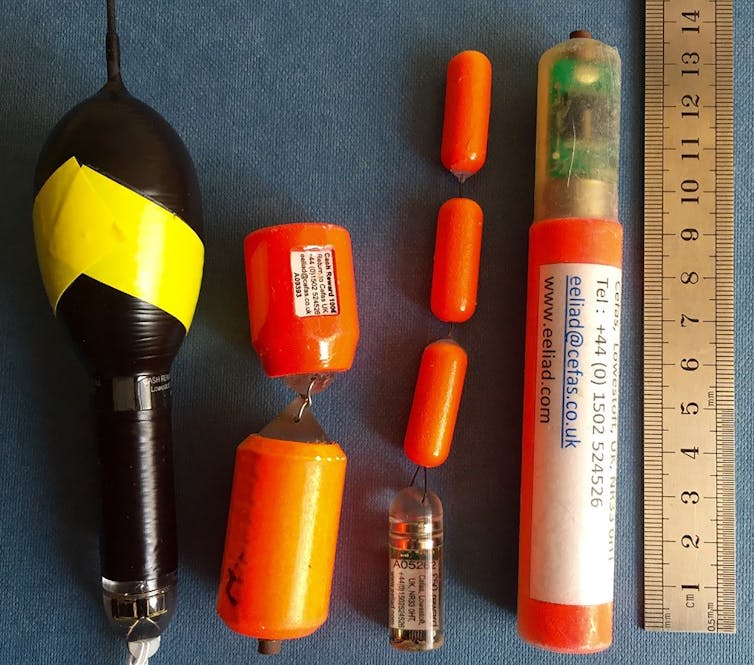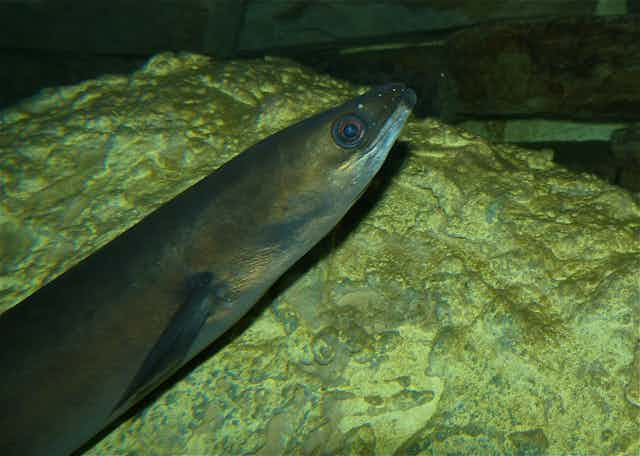Eels are found everywhere throughout Europe, wherever there is access to and from the sea. They’re unfussy eaters, and are flexible enough to live in almost any lake, river, stream, ditch or estuary.
To the casual observer, therefore, it may come as a surprise to learn that the European eel (Anguilla anguilla) is categorised as critically endangered on the official IUCN Red List of Threatened Species. In fact, the European eel is technically of greater concern than conservation icons like the Bengal tiger or giant panda.
This is partly because the European eel’s lifecycle still remains surprisingly mysterious. We do know that they spend most of their lives in freshwater, before migrating some 5,000-10,000km to their presumed spawning area in the Sargasso Sea, a vast, calm, distinctive body of water in the western Atlantic. Here, it is assumed the eels spawn and lay eggs (although this has never actually been witnessed). Once hatched, the larvae then drift across the Atlantic Ocean back to Europe. There, they transform into transparent “glass eels” which colonise rivers and lakes and where they live and grow to adulthood.
This cycle means most Europeans will never see the earliest eel life stages and has led to much speculation over the years. Where, people wondered, do eels come from?

In his History of Animals, written in the 4th century BC, Aristotle claimed that eels were produced not through sexual reproduction but by spontaneous generation. Lacking in milt (the fish equivalent of semen) or eggs, nor possessing the passages for either, he asserted that eels emerged from earthworms:
There can be no doubt that the case is so. For in some standing pools, after the water has been drained off and the mud has been dredged away, the eels appear again after a fall of rain. In time of drought they do not appear even in stagnant ponds, for the simple reason that their existence and sustenance is derived from rainwater.
It is easy to laugh at this fanciful notion, armed with the wealth of knowledge accumulated in the centuries since the ancient Greeks. However, almost 2,500 years later scientists are still trying to solve the riddle of the lifecycle of one of the world’s most mysterious and fascinating animals.
Indeed, it wasn’t until the beginning of the 20th century that Danish scientist Johannes Schmidt was able to identify the southern Sargasso Sea as the presumed spawning site of the European eel. Schmidt never actually saw any adult eels there, though. Instead, he collected larvae from across the Atlantic, and noted that the smallest, youngest larvae were found in the Sargasso Sea. To date, however, despite considerable research efforts, European eels have still not been observed reproducing in the wild, nor have any adult eels been captured in the Sargasso Sea.

Follow the eel
These days, thanks to GPS and more recent developments in batteries and satellite tracking tags small enough to fit on the back of an eel – technologies that Schmidt could only dream of, never mind Aristotle – scientists have the tools to investigate aspects of the eel life cycle that were previously out of reach.
One team of researchers, led by marine ecologist David Righton, has mapped oceanic migration routes using pop-up satellite tags, which attach to the eel temporarily before eventually coming loose and floating to the surface where they can broadcast data. Across a five-year study, the researchers attached these tags to 707 eels they released from five European locations. Most eels they tagged were quickly eaten, but 87 survived and made it into the open ocean before their trackers ran out of power.
The findings from this study, published in Science Advances, reveal some extraordinary journeys. Eel migration routes extended toward the Azores, some 5,000km in the direction of their presumed spawning area in the Sargasso Sea.
As trackers become smaller and more powerful, the European eel’s full migration route will hopefully eventually be revealed. However, in the meantime, this recent research provides a fascinating insight into their migration. For example, all tagged eels exhibited daily vertical migrations, moving from deeper water during the day to shallower water at night.

In addition, the range in swimming speeds (anywhere from 3k to 47km per day) suggests it is unlikely that all eels spawn as a single cohort in the spring after they leave their river the previous autumn – an assumption held since Schmidt’s first discovery of eel larvae in the Sargasso Sea at the beginning of the 20th century. Rather, the researchers suggest that European eels likely adopt a mixed migration strategy, with some fast swimmers soon reaching the relevant area for immediate spawning, while others arrive only in time for the following season.
This new Europe-wide collaborative research, utilising advances in technology to go where we haven’t been able to go before, may finally help us solve the final piece of the puzzle of the life cycle of this most enigmatic of creatures. But then again, eels have been leading us up a slippery path for years.

